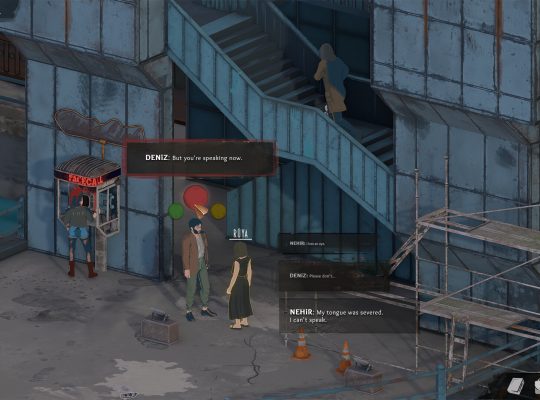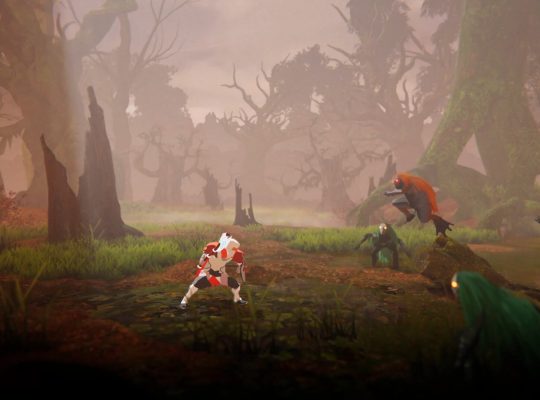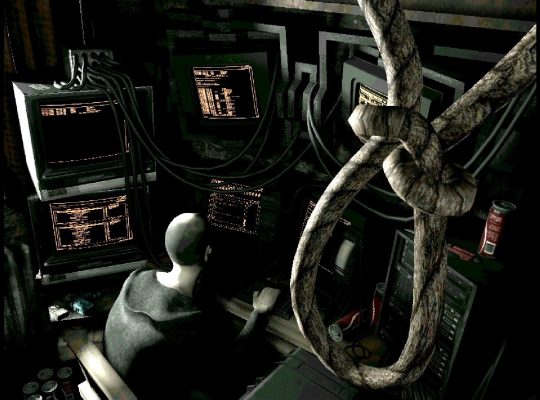We recently visited Željko Kos at his studio, or office, depending on what you prefer, located inside Zagrepčanka, a business skyscraper in Zagreb, at the intersection of Savska Street and Street grada Vukovara. The visit was prompted by our earlier interview, where we briefly touched on his project. Now, we had the chance to take a closer look at Pompeii: The Legacy, which has already made it onto 15,000 wishlists on Steam.
This ambitious city-builder is set in the Roman era and promises hours of strategic and building fun, judging by what Kos showed us. The studio is a small space where another game, Kaiserpunk, is also being developed, literally right next to it.
“I’m working on this game solo, while the rest of the team is focused on Kaiserpunk. There are ten of them, and the reason I’m not involved in that project is that I was finishing Aquatico while they were transitioning to Unity. I’m a stubborn person and wanted to stay with my own engine. That’s how it all started,” Kos explains.
Although he leads the primary development alone, he occasionally seeks help from graphic designers and artists for creating buildings, characters, and portraits. He also consults with other developers when he needs advice. His focus remains on programming the core elements of the game, from water, nature, and landscapes to animals, building mechanics, family trees, and armies. On top of that, Kos creates certain assets himself, uses Photoshop, and handles social media promotion.
“Every day, I write down what I need to do. I have a lot planned and even worked through the holidays. Still, my days are filled with failure—I always have a plan, but I never manage to complete it entirely. However, I push as much as I can. The game is developing very well, even though there’s still a lot to do. Everything is progressing according to plan. That’s the life of a developer,” Kos candidly admits.

History and Authenticity of the Game
“The main reference for the game is Caesar. Having already worked on two city-builders, it’s natural to draw certain ideas from there. I just can’t escape it. I use a lot of my own photographs, mostly from Istria and Italy, but I also rely on Google Street View. Whenever I need to verify something, like the view of Vesuvius from a specific hilltop, Street View is an excellent tool. I’ve gone into detail, virtually touring the remains of various sites to study shrubs, trees, and other elements. Of course, it’s not the same as being there in person, but as a reference, it’s fantastic,” Kos explained to us.
He added that he draws inspiration from documentaries, series, and films: “Shows and movies like Gladiator take me back to that era and help me capture the atmosphere of Rome. My goal is for the player to feel the same through the game, to immerse themselves in the world we’re building. I don’t want it to just be a city-builder. I love games that have depth, emotion, where every part of the game can be explored in detail.”
The game will feature four levels of societal classes represented through buildings: slaves, plebeians, patricians, and senators. While senators won’t be directly depicted, since Pompeii primarily served as a provincial retreat, they will act as a source of income. City-building mechanics will include mining, trading, crop and livestock farming, with buildings having specific functions. For instance, resources like stone will need to be extracted from the mountains or quarries, while gatherers will be responsible for collecting specific items.



Diplomacy and Stories on the Map Bring Intrigue
The map will feature over 20 cities with which you can trade and interact. Diplomacy will involve forming marriages, alliances, or resolving conflicts: “There will be intrigue and drama, but it won’t go too deep. The goal is to add dynamic elements as you build your city. For instance, if you have an heir who needs to marry, you can choose whether the marriage will be for love or political interests. Will it spark a war, or will the marriage bring family benefits through the bride’s skills? These decisions introduce RPG elements into the game,” Kos explained. While these RPG elements won’t drastically alter the core gameplay, they will influence the course of the game, adding depth and a reason to keep players coming back.
Kos also demonstrated how the character portraits in the game were created. He used 3D scans of real people as references, which were then edited and adjusted to match the historical period and game style. All of this was done to avoid using AI technology. The game will feature a total of 120 characters, each with unique clothing and visuals: “The reason is that players are still sensitive about AI technology, and Steam requires clear labeling if the game uses AI-generated content,” said Kos.
One standout feature Kos highlighted is the character who guides you through the game, explaining the core mechanics. Additionally, the game will include long-term quests designed to provide clear objectives and keep players engaged: “The tasks are very long, spanning a period of three hundred years. The idea is to always have something to do, without overcomplicating things, while hints help players navigate,” Kos added.



The Fusion of Technology and Philosophy
The research system is divided into two branches: Technology and Philosophy. "I must admit, I haven’t fully worked it all out yet," Kos shared. "While on vacation in Pula, I sat in the Arena for an hour, observing everything happening inside to get a sense of the Roman era. The philosophical aspect of the game is particularly important to me, but it’s challenging to find the right balance. For example, when I wanted to include stoicism, people pushed back, thinking I planned to add famous philosophers. The goal is to connect technology and philosophy with city-building to create a dynamic system."
Kos also showed how his custom engine and editor work, tools he uses to create buildings, animations, and other game elements. He showcased how soldiers will look in the game, how they will move, and the locations they will occupy. His editor allows for assembling models, animating them, and managing every detail of characters and environments with precision.


The Volcano Will Play a Crucial Role in the Game
The entire area around the volcano will be scorched at the start of the game, allowing players to gather resources and items from destroyed buildings. Certain placeholders will represent a recreation of the devastated city.
"The river used to be much smaller and flowed from volcano Vesuvius, but that isn’t how it’s depicted in the game. Instead, the river flows close to the volcano because it wasn’t possible to recreate it accurately. A man from Naples advised me not to make everything identical, but rather to focus on creating a sense of authenticity. Players will clear the area in front of them and gradually move towards the top of the map and the volcano. In reality, that part hasn’t been touched for centuries, but that’s part of the fiction. In the later stages of the game, players will receive technology from Rome that will allow them to excavate buildings buried in ash and collect resources."
Over time, the volcano can reactivate. Ash will fall like snow, magma will be ejected, and earthquakes will further shake the city. However, the city won’t be completely destroyed, giving players the chance to adapt to these challenges.



Family, Religion, and Society as Additional Layers
One of the more intriguing elements of the game is the generational family system, depicted through a family tree. Each family member, whether a child or an adult, will possess their own skills. These characters serve as an RPG element, where the usefulness of the family is crucial for progress.
Religion will be presented in a simplified manner, featuring animal sacrifices, a common practice of the time. Alongside religion, the game will include hygiene and medicine systems. Players will be able to construct bathhouses, laundries, and employ herbalists and "doctors." Social life will also play an important role, with entertainment options such as gladiatorial games, arenas, circuses, and amphitheaters offering a variety of activities for players to enjoy.
Kos also demonstrated how the decoration and monument systems will function. Monuments won’t just be decorative elements for recreation points but will influence each other. For instance, a larger monument is best paired with fountains, while smaller nearby monuments can receive limited bonuses. Monuments will come in various designs, providing both aesthetic and functional value to the city.
What Can We Expect by the End of This Year?
The plan, according to Kos, is to complete a demo version by June, just in time for the Steam Next Fest. The next step is the release of a gameplay trailer, which should arrive very soon. Kos hinted at the possibility of collaborating with a publisher and mentioned some well-known names, but no official agreements have been made yet. What he did confirm is that the goal is to release the game this year. Whether that plan comes to fruition remains to be seen.
? Huge milestones for Pompeii: The Legacy! ?
— Zeljko Kos – Making Pompeii: The Legacy (@zzeljkokos) January 10, 2025
? Thank you for +15,000 wishlists on Steam!
A special thanks to the Croatian Audiovisual Centre for their incredible support with a €15,000 grant to bring this dream to life. ?️#IndieGame #CityBuilder #PompeiiTheLegacy pic.twitter.com/9XHrjBoIH0









